
Wednesday, October 4, 2006 B
"Pioneer Square"
8:44pm

Wednesday, October 4, 2006 B
"Pioneer Square"
|
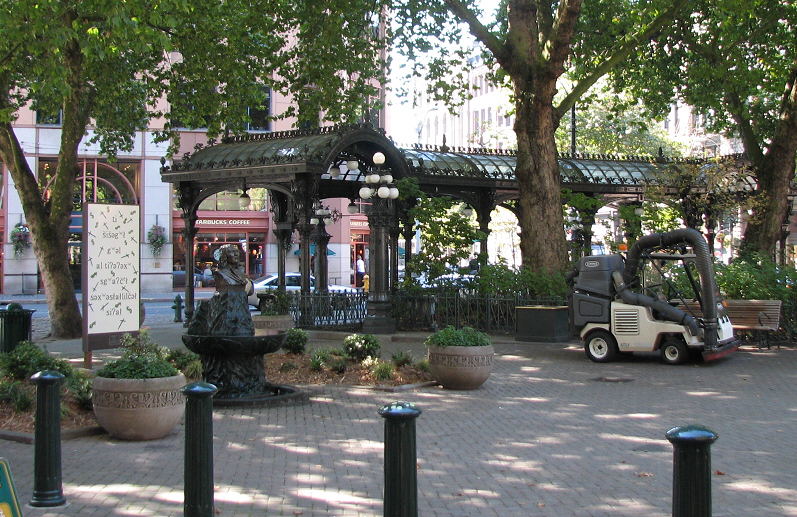
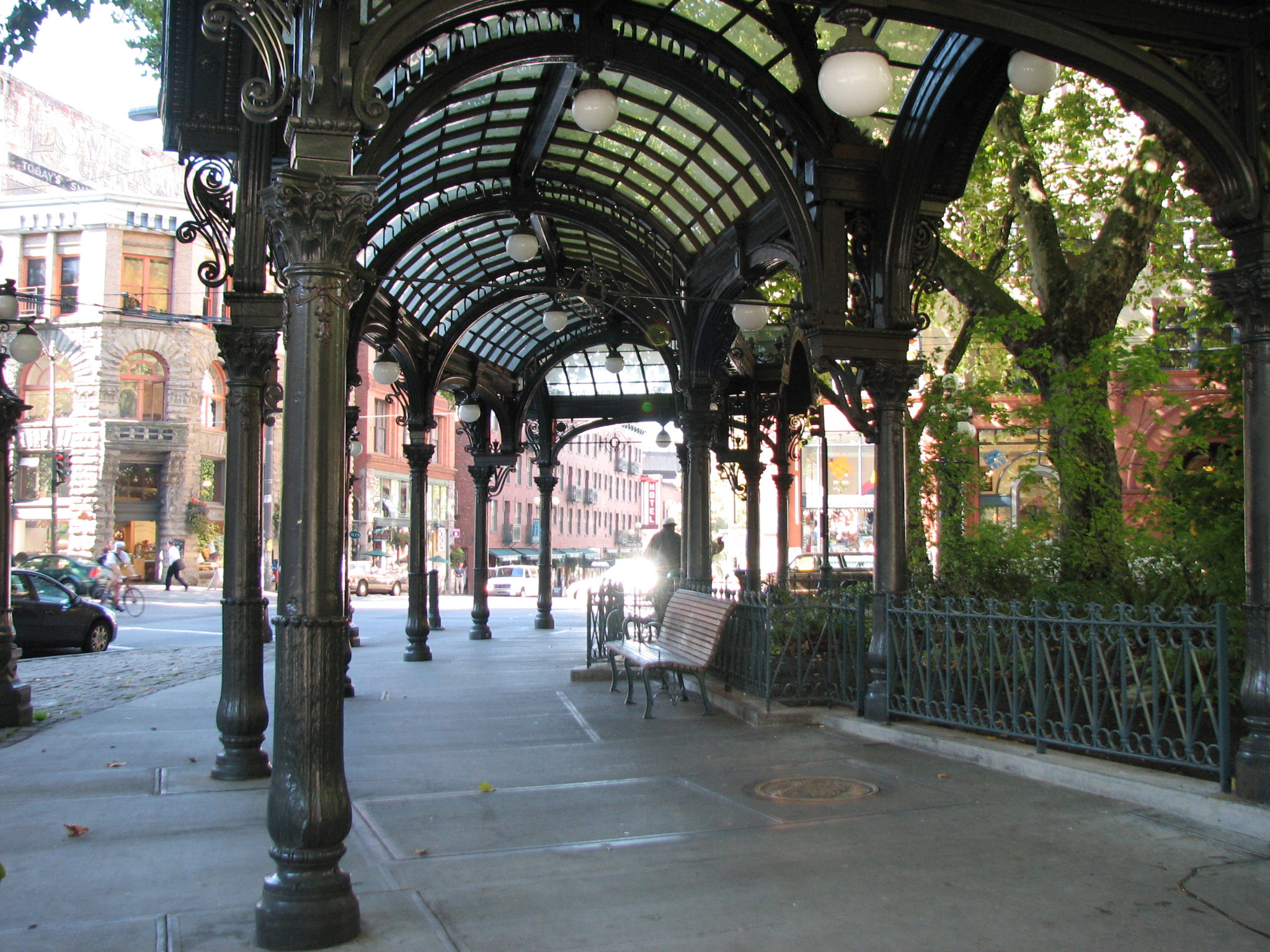
The Pergola was built in 1905 to shelter passengers waiting for the cablecar
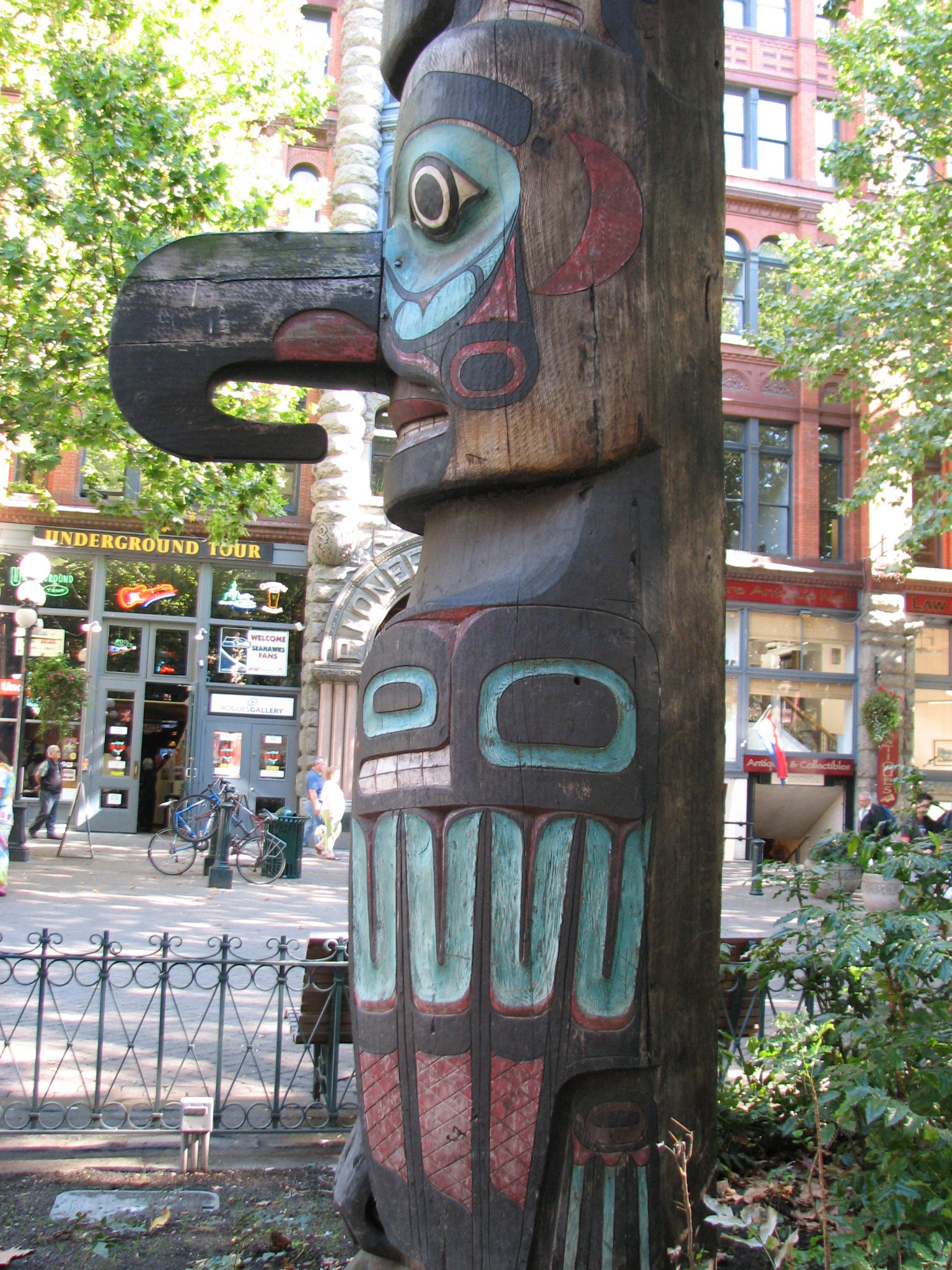
Totem pole from the Tlingit American Indian village (1890)
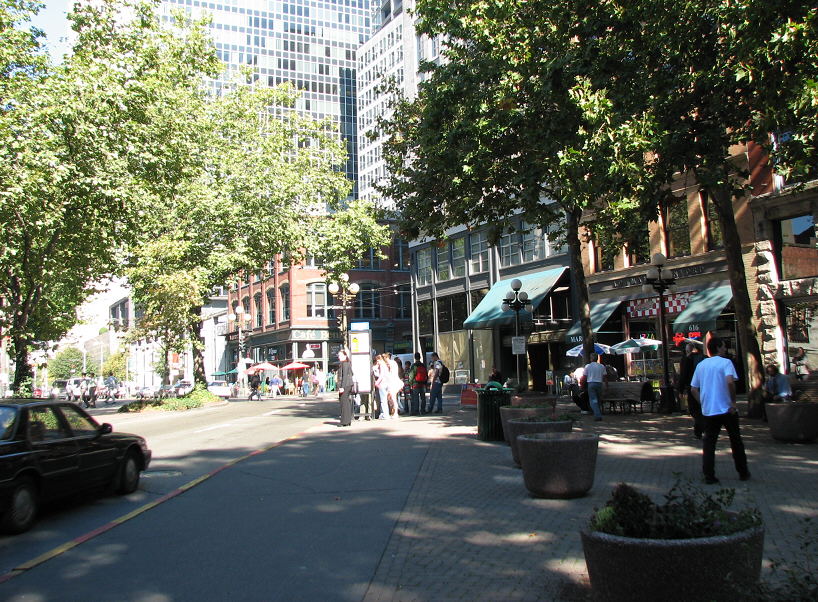
The old against the backdrop of modern buildings...
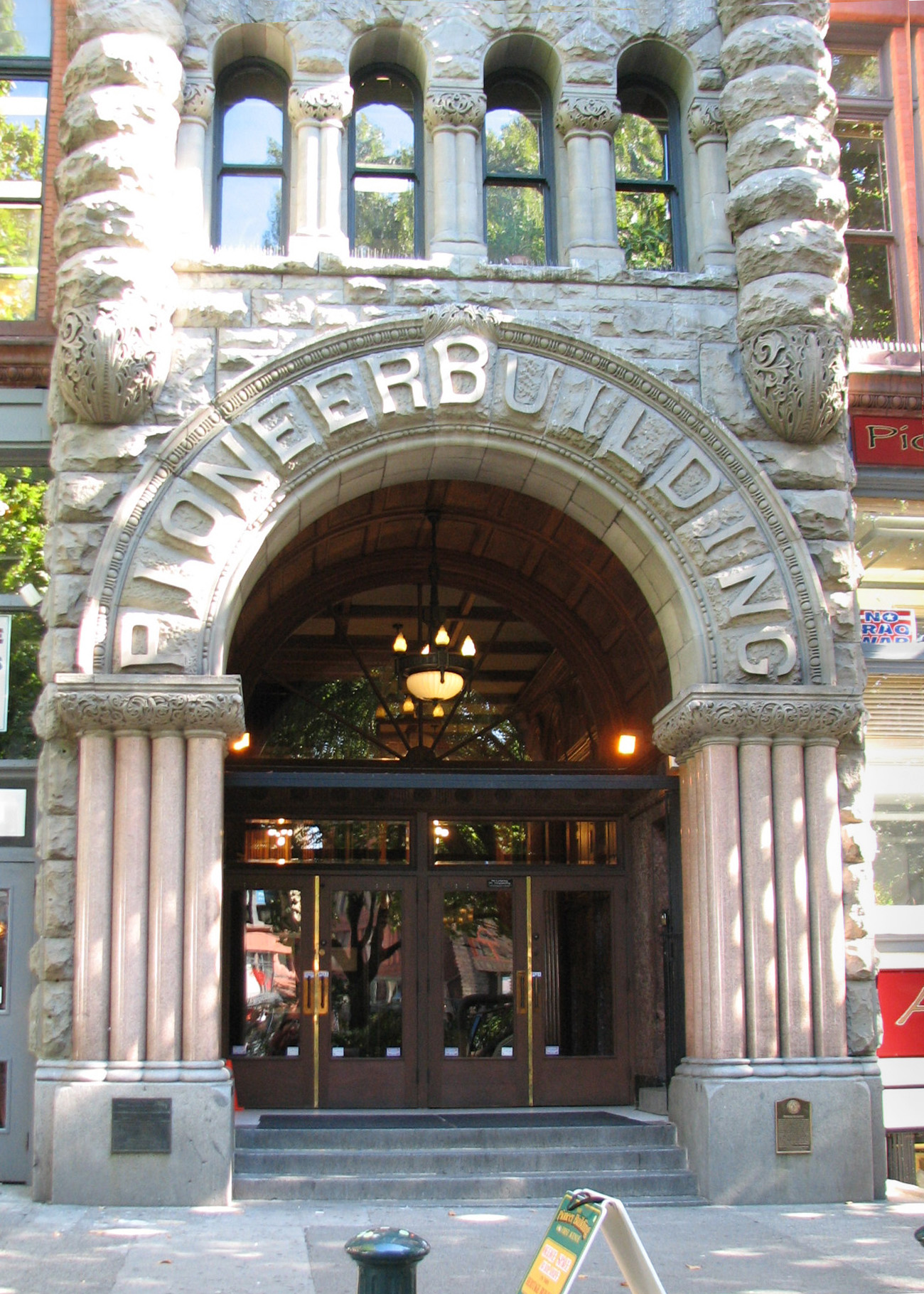
I love this door with its reflections. Click for full size detailed view...

Thursday, October 5, 2006
"As Above, So Below"
|
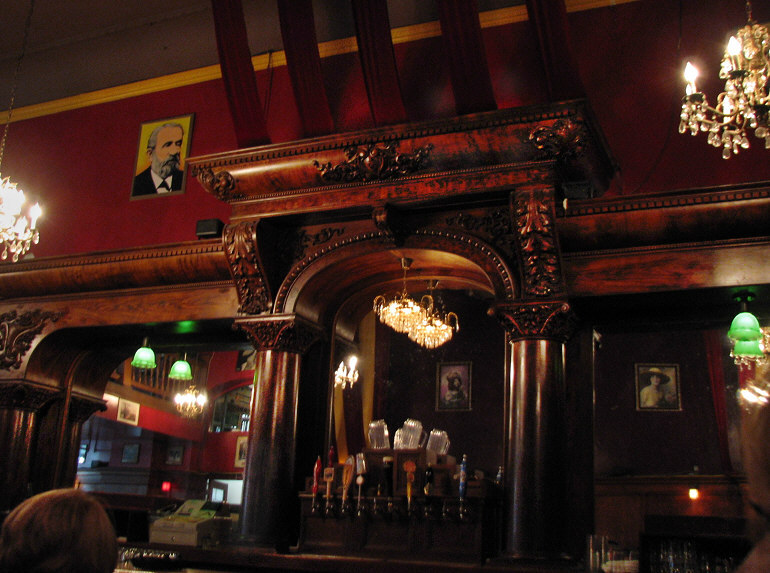
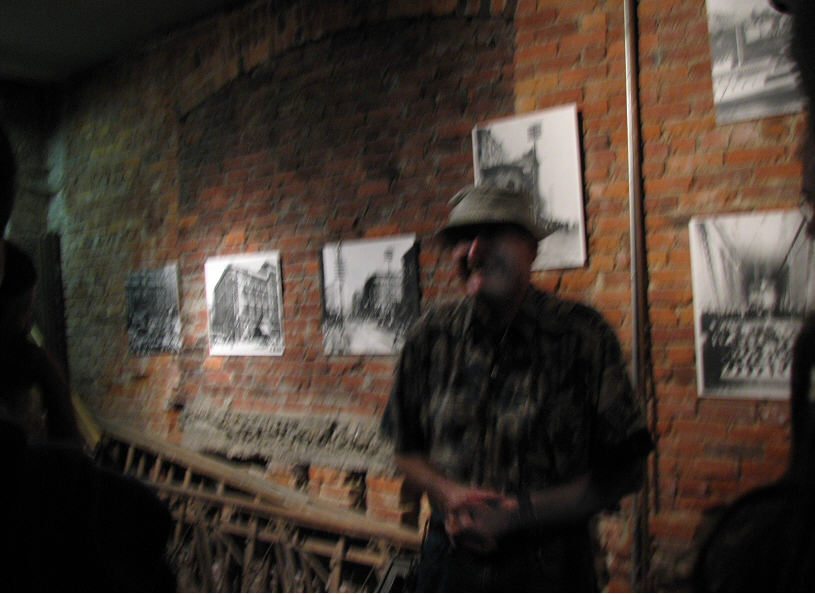
Bruce led us underground to show us the sights...
| In June of 1889, most of Seattle's central business district burned to the ground in the Great Seattle Fire. The city rebuilt from the ashes rapidly, opting to use brick and stone buildings, rather than wood which burns too easily. The businessmen did this with great haste to ensure that profits continue to roll in. However, the town's officials wanted to rebuild the city one to two stories higher than the original street grade. This would solve the problem of being on a marshy land and the sewer problems they often had. But the businessmen had already rebuilt their buildings. So the officials just made the streets higher. It was a confusing mess, as pedestrians climbed ladders to go between street level and building entrances. To light their way underground, small glass cubes were built into the upper sidewalk to illuminate the underground passages: |
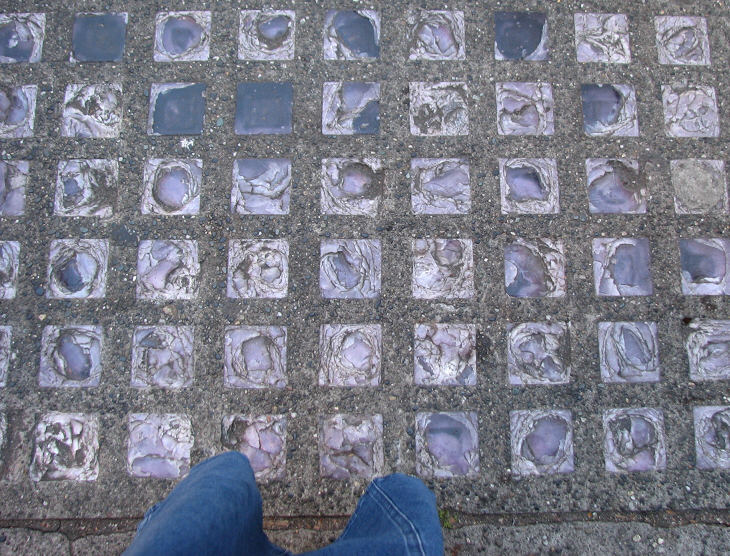
| With time, the glass cubes discolored as a result of chemical interaction with sunlight. |
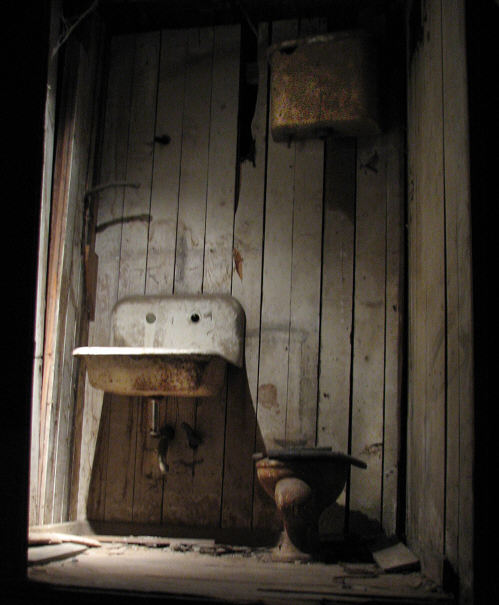
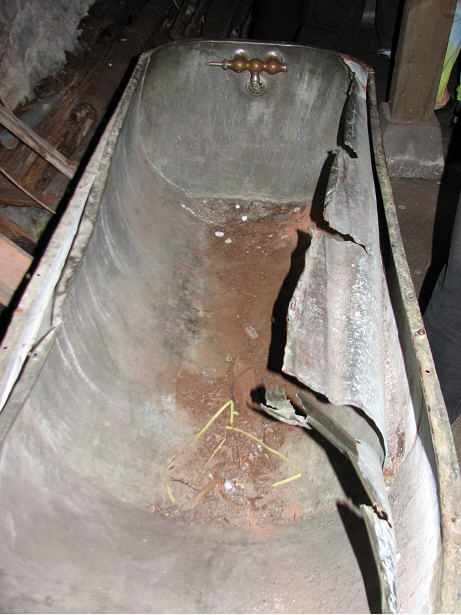
If the toilet looks bad, the tub was worse...
| In 1907 the city condemned the underground for fear of bubonic plague, and also to ready the city for the the 1909 World Fair being held in Seattle. The basements were mostly left to deteriorate or were used as storage. But eventually they found other uses, illegally becoming flophouses for the homeless, gambling halls, speakeasies, and opium dens. Then wear and tear made them unusable for any reason until 1965 when local citizen Bill Speidel had a portion of it restored and made safe and accessible for his underground tour. Our tour guide probably didn't have the same patter the original guide did in 1965, as he spiced it up with much humor. We all laughed often, enjoying ourselves tremendously. |
Forward...
Go Back to Travel Archives
Go Back to Archives...
Go Back to Main Journal Index Page...
Go to Index of Joan's pages...
![]()
© Joan Lansberry